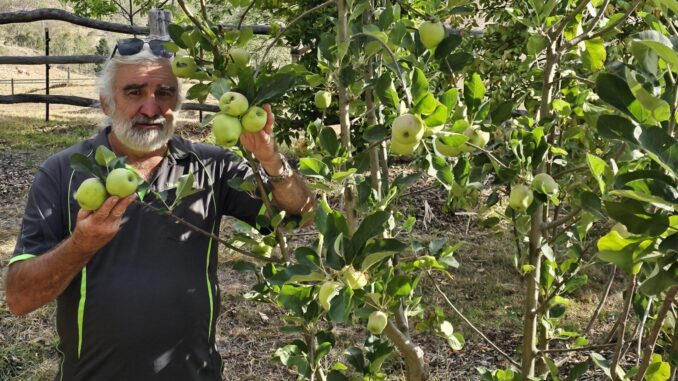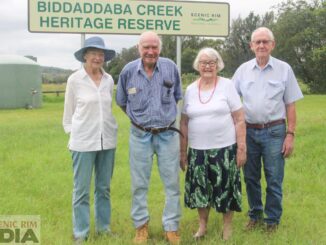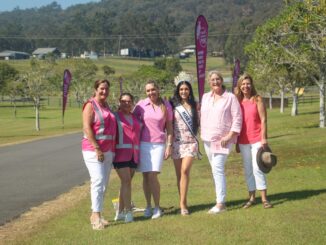
People are often surprised when they see apple trees when they attend farm fours or workshops here. Most people think Stanthorpe or Tasmania for growing apples but there are quite a few varieties like ‘Anna’, ‘Tropic Sweet’ and ‘Dorsett Golden’ that will grow well locally.
When planting out any fruit tree, always consider the natural growing areas of that particular fruit. Apples need a nice chill factor to flower well and then set fruit. Ours are planted in more shaded spots away from the late afternoon sun and where there is a bit more nip in the air come winter time.
Apples like a slightly acidic to neutral soil. When we plant nearly all fruit trees we start with a large hole and plant into 100% our compost. This gives trees a healthy and flying start.
Once we have planted an apple tree, we will cut the top off at about 50 to 70 centimetres above ground height. This should encourage the tree to branch in several directions near where the cut is made. We try to use a bit of fresh aloe vera on the cut to help seal the wound. Aloe vera is a natural antiseptic. We are looking to have the tree end up with lots of branches forming a nice vase shape with an open centre. Good air circulation from an open centre reduces fungal diseases like black spot and powdery mildew.
We prune every year in June when the tree is largely dormant. We cut apples back to about two metres tall. This makes the trees easy to maintain and to have easy access to fruit. We fertilise our established apples in June, using our compost and always keep them well mulched. For smaller trees we will add a second fertilize late in the year.
Our local rainfall is sufficient when established, but a top up in dry spells will be needed. Why not add some apples into your growing space?





